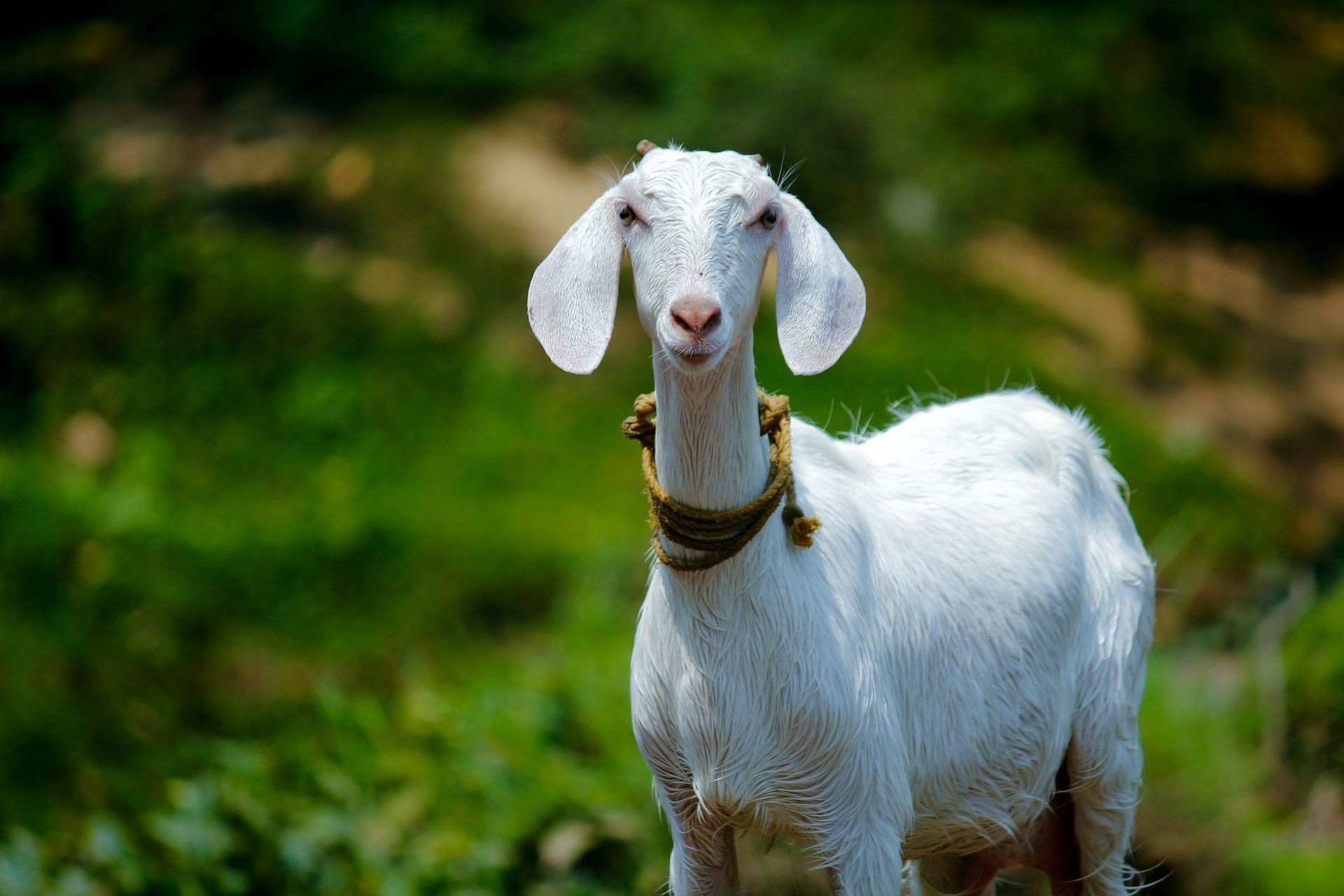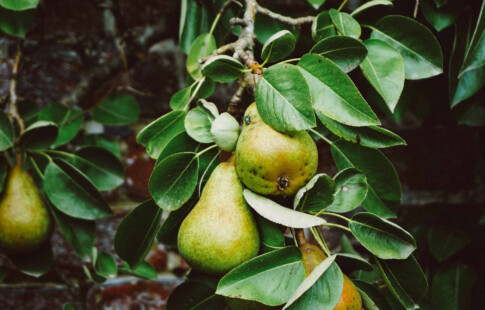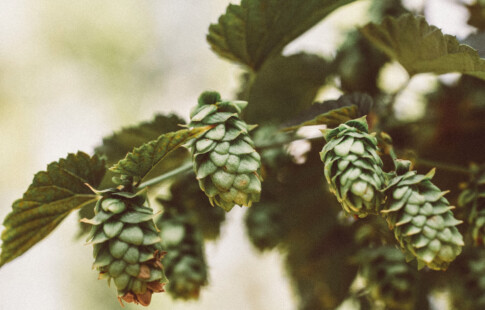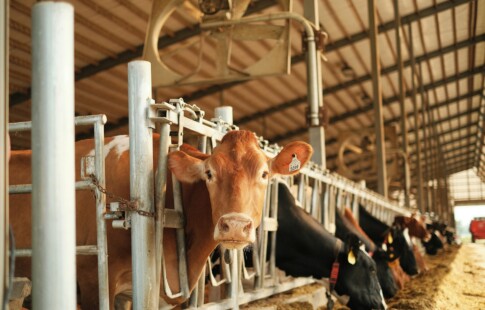
Goat Milk vs. Cow Milk: How Do They Stack Up?
We are reader-supported. When you buy through links on our site, we may earn affiliate commission.
There’s nothing like an ice-cold latte on a summer day to beat the heat. Odds are that if you live in the Western world, your barista made the drink with cow’s milk or even an alternative plant milk. However, goat milk has become more popular in the U.S. in recent years, with many people touting its health benefits. Is it really worth the higher price tag? Here’s a closer look at goat milk vs. cow milk to see how they compare.
Nutrition Facts
At 168 calories per cup, goat milk is more calorically dense than cow milk, which has 149 calories per serving. It offers nine grams of protein, while cow milk provides only eight. Goat milk has one less gram of sugar per cup than cow milk. However, it has a much higher sodium content — 122 milligrams (mg) per serving compared to 105 mg in cow milk.
Goat milk has a slightly lower carbohydrate content than cow milk. It also has more fat — 10 grams per cup, two more grams than you’d get from cow milk.
When it comes to essential vitamins and minerals, goat milk is the winner. One cup provides 327 mg of calcium, 34.2 mg of magnesium, 271 mg of phosphorus, and 498 mg of potassium. In contrast, the same quantity of cow milk serves up 276 mg of calcium, 24.4 mg of magnesium, 205 mg of phosphorus, and 322 mg of potassium.
Taste
The next category for evaluating goat milk vs. cow milk is taste. Milk from a Holstein cow — the most common dairy cattle breed — is creamy, slightly sweet and relatively neutral. Dairy companies mix milk from many herds, evening out the taste of milk from individual cows. A single gallon of cow milk may come from hundreds or even thousands of cows all fed a similar diet.
Many people report goat milk tasting grassy or similar to the smell of goats, with a stronger flavor than cow milk. However, it can also be neutral or slightly sweet.
The taste depends partly on whether the milk was pasteurized and refrigerated properly. It also has to do with the goat’s breed. In the U.S., many goat dairies are small operations, and the goats belong to different breeds eat different diets. There is less standardization among dairy goats than dairy cows, meaning the milk’s flavor can vary greatly from one farm to another.
Price
Goat milk is typically more expensive than cow milk. In the U.S., a gallon of cow milk is usually $1 to $1.50, while goat milk runs around $4.50 or even higher. There are two main reasons cow milk is cheaper.
First, goats are smaller animals that produce much less milk than cows. A dairy cow produces an average of six to seven gallons of milk per day. In contrast, a dairy goat in her prime might provide just over a gallon of milk daily.
Coupled with the fact that there are vastly more dairy cows than goats in the world, goat milk is harder to find than cow milk, raising its price. In 2017, worldwide goat milk production was 18.7 million tons, while dairy cows produced 511,600,000 metric tons of milk.
Ease of Digestion
Some people who have trouble digesting cow milk report that goat milk is easier on their stomachs. It has a slightly lower lactose content than cow milk, although the difference is almost negligible. Goat milk also contains smaller fat droplets than cow milk, which may be why it’s easier on some people’s stomachs. The jury is still out on this one.
People with true milk allergies should still not drink goat milk, as it can cause a reaction. But if you struggle with digesting cow milk, you can cautiously try goat milk and see if it sits better with you.
Environmental Effects
Widespread milk production — regardless of species — is hard on the environment. It’s difficult to say whether goat milk or cow milk is better for the planet, because both contribute strongly to climate change. Theoretically, goat milk production is better overall due to its small scale, while producing cow milk is better when it comes to efficiency.
Raising animals contributes to climate change in several ways. First, cows and goats emit methane, which goes into the atmosphere and warms the planet. Farming also requires significant land use and converts ecosystems into areas of low biodiversity.
What about plant milks? Alternative beverages like almond, soy, and oat milk have recently taken the world by storm due to their lower carbon footprint. Their production still requires significant water and land use and emits methane, nitrous oxide, and carbon dioxide, but it’s a lower impact than that of dairy. Which one is the best environmental choice?
Almond milk is one of the most water-intensive alternative milks — it takes several gallons of water to produce a single almond. However, almond trees also capture and store carbon above and below ground. Using byproducts like almond husks and shells for animal feed could make almonds even more environmentally friendly.
Oat milk production uses glyphosate — a pesticide also called Roundup — but it requires less water than almond or soy milk production. It takes around 13 gallons of water to produce one glass of oat milk.
Coconut trees require very little water to grow. However, farmers often grow them as a single crop, harming soil quality and biodiversity.
Soybean production takes up a vast amount of space, much of it in the Amazon Rainforest. But it’s important to note that much of that soy is slated to become animal feed rather than milk. When using soy to make soy milk, it’s much more environmentally friendly.
Each type of plant milk has pros and cons, so find the one you like best — they’re all much better for the environment than dairy.
The Verdict on Goat Milk vs. Cow Milk
Both goat milk and cow milk are nutritious, calorie-dense dairy products. Goat milk is higher in fat and several minerals than cow milk. Many people also find it easier to digest. However, it tends to be more expensive and is an acquired taste for some people.
Ultimately, deciding which milk is better all comes down to personal preference, but plant-based milks are best from an environmental standpoint. Drink up!
Share on
Like what you read? Join other Environment.co readers!
Get the latest updates on our planet by subscribing to the Environment.co newsletter!
About the author
Rachel Lark
Rachel serves as the Assistant Editor of Environment.co. A true foodie and activist at heart, she loves covering topics ranging from veganism to off grid living.





